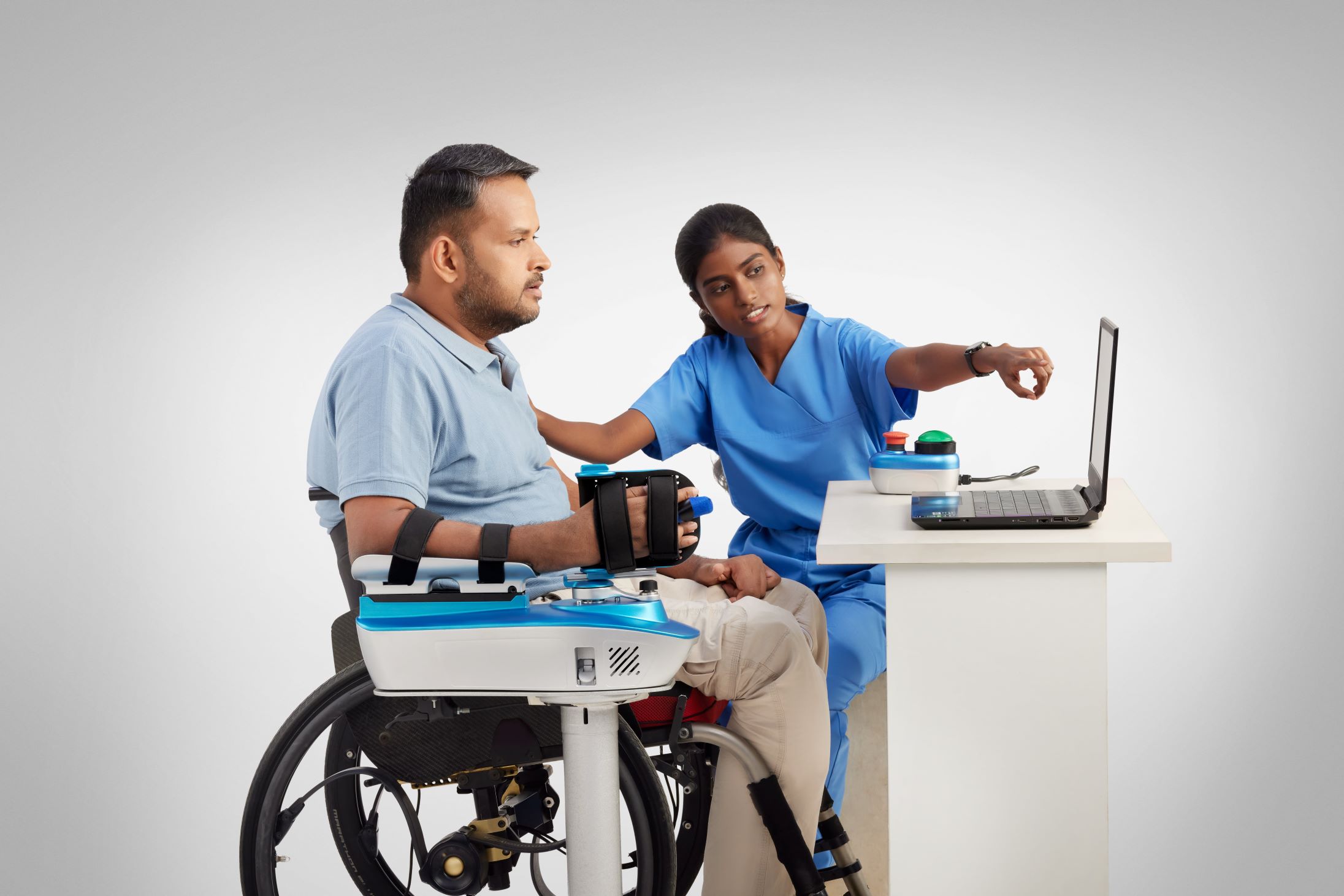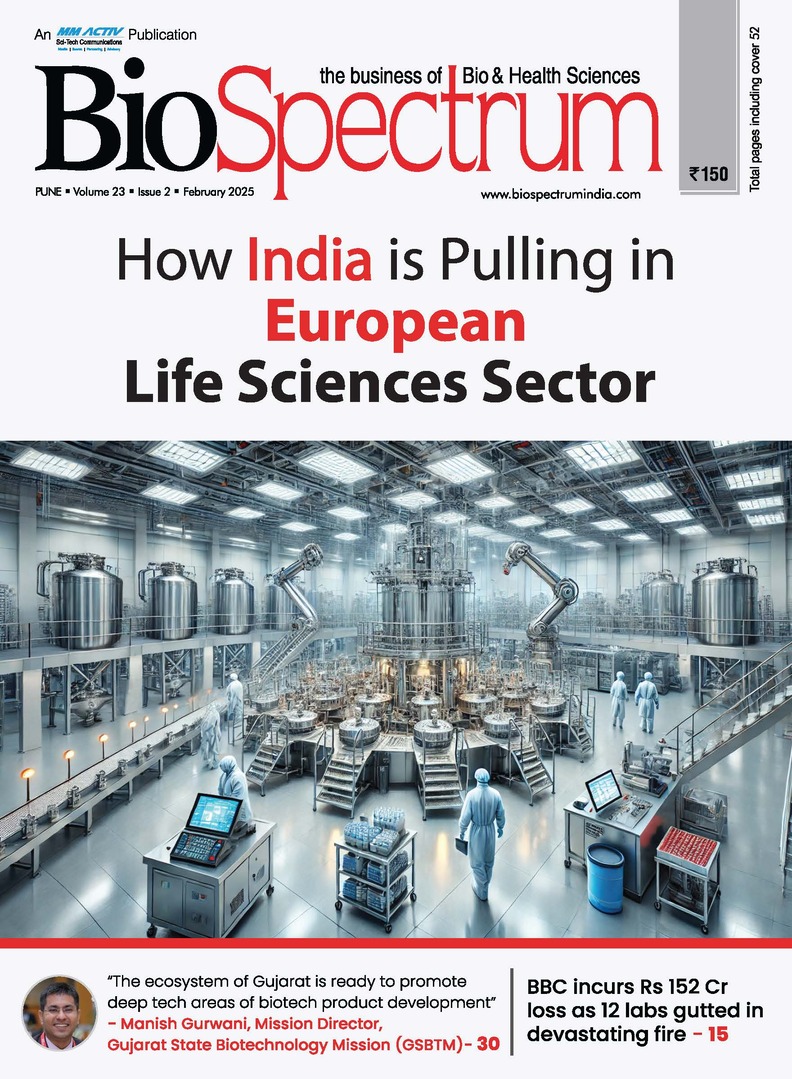IP to Market Place, Avesthagen Shows the Way
07 February 2008 | News
IP to Market Place, Avesthagen Shows the Way
With a pipeline of over 160 patents in about seven years, Avesthagen is on the threshold of unleashing 15-20 products in the next two years.
Over the past few months, Avesthagen has been making several major announcements. These announcements indicate that Avesthagen is bracing itself for its initial public offering (IPO). In January 2008 alone, there were two major announcements. One, Avestha Gengraine Technologies becomes Avesthagen Limited. The announcement that Avesthagen has become a limited company, following an approval from the Registrar of Companies, is a step towards broadening of its corporate legal status and bringing in stringent corporate governance. "It also brings transparency in all our operations and the opportunity for future public participation in wealth creation. A public limited status will also help us to rope in public and institutional investments for future expansion needs," said Dr Villoo Morawala-Patell, Founder & CMD, Avesthagen Limited, and the BioSpectrum Entrepreneur of the Year in 2006.
 |
The other announcement that Avesthagen made was that it has put into pipeline some of its key patents. This is a very significant achievement for a company, which began its formal business operation in 2001 as an innovation model. Though it is difficult to substantiate its achievement on a comparative ground, the gut feeling is that Avesthagen's achievements are not only unique but also an enviable feat.
Patents journey
The organization started on the basis of two patents. "I wanted to start an organization that was unique and would bridge academia and the industry. Initially, it was to be a Public-Private type of initiative. I wanted the organization to be anchored on an innovation platform and have a strong patent portfolio," Dr Villoo explained. So around mid-1998, she registered Avesthagen as a not-for-profit organization and Avestha Gengraine Technologies as a company for commercial purpose. The idea was to drive grants into 'Avesthagen' and then spin out technologies that could be commercialized into the private entity 'Avestha Gengraine'. At that time, the academia (public institutions) did not treat patents as a priority and the venture capitalists (private) were apprehensive about the public-private model. In other words, neither of the sides was ready to accept the other. Avesthagen was thus born in a conflicting environment.
At that time, Dr Villoo was trying to get the rice genome project to India and though she could convince Japan to allocate the chromosome to India, she was not able to get the funding. She realized that this was not working out. This was in September 1999 and she decided to detach from this model and become a private company. Two agriculture technologies were the cornerstone patents to achieve this. One was from Dr Villoo's work from the Rockefeller fellowship which was basically to engineer rice for drought tolerance. The other used RNA editing to induce male sterility in plants to enable production of hybrids. "Then I filed for a third patent which was for millet transformation. These were provisional patents that cost about Rs 1,500 each" said Dr Villoo.
She was working then between the campuses of NCBS and UAS in Bangalore and decided to work from a rented place in Sahakar Nagar in Bangalore. "From September 1999 to November 2000, we operated there and the business plan was based on these patents and my goal was to create an India-based global entity on the pillars of India's biodiversity, cutting edge science and convergence of food and pharma," said Dr Villoo. The mantra was "Seed for Food", "Food for Medicine", R&D services and partnering. Avestha Gengraine Technologies absorbed Avesthagen as a brand that is committed to socio-economic equality, according to Dr Villoo.
|
Patent filing system and process at Avesthagen Intellectual property has gradually become a core component of the long-term strategy of the company. "Avesthagen is proactively pursuing patent protection for its innovations and is looking at building a large patent portfolio which provides sufficient coverage to practice a technology along with sufficient defense and a good offensive position regarding the product, in order to provide a competitive advantage in an environment where battle lines are readily drawn. The essence of Avesthagen's research and development philosophy lies in building and strengthening the patent portfolio," said Dr Villoo. Avesthagen addresses the limitations of the typical IP chain by treating IP as a manageable asset and by incorporating it into the business planning process, much like any other business process. The result is a fully integrated IP value chain that has succeeded in aiding the company in building a targeted portfolio of IP, which also supports its business objectives. A comprehensive business strategy has been evolved by Avesthagen that guides and directs the IP value chain. The patent portfolio of Avesthagen encompasses the four major strategic business units namely BioPharma, BioNutrition, BioAgriculture and Science & Innovation largely covering the inventions related to Metabolomics, Molecular Markers, Novel protein and Gene sequences, Biotherapeutics, Bioinformatics, Microbial Genetics, Novel protocols and Processes and formulations. The IP team is involved at every stage of the research and development process to enable the development of truly novel technologies for global markets and ensures that the R&D activities conducted in these business units are fully protected by means of patents. "By means of competitive IP intelligence, we assess the technology and patent landscape associated with the current and future products/technologies. The knowledge of this relevant patent landscape provides a sustainable competitive advantage for developing and executing core business strategies," said Dr Villoo. Hence, by studying the patent landscape Avesthagen avoids the pitfalls of forging into a heavily patented area, if it chooses to work in a competitive arena. In addition, the patent literature available provides insight into the priorities and strategies of competitors, and point to potential acquirers, licensors of technology and gaining an insight into the scientific trends and developments. After having established a competitive IP landscape, the next step is to develop an IP roadmap--a step-by-step plan that outlines the finer details of the IP strategy and directs decisions about IP investment. The map points to inventors to the areas where they should innovate and the legal team to what is patentable. The main step-by-step patenting process in Avesthagen includes conception, primary documentation, capture, initial review, formal documentation, formal review, legal documentation, and patent prosecution by a team specially constituted for the purpose. The team varies according to the nature of the invention. External support comes in the shape of law firms who handle the patent application on behalf of the company. "Inventors are intimately involved with the fine details of the technical steps leading to their invention, and hence they often find it difficult to discern between their inventions and prior art. The patent team in Avesthagen clears this hurdle by scrutinizing their laboratory books every week and then targets areas of potential interest," said Dr Villoo. |
IP to business
The mantra was to create technologies and make deals. Avesthagen anchored the "Food for Medicine" strategy working in the area of Indian medicinal plants and developing systems and tools for analysis of medicinal plants. Following a systems biology approach, it developed AdePt, a comprehensive database of medicinal plants linked to disease conditions. The second was MetaGrid, which is an algorithm that links metabolites to efficacy at the cell assay level. "These were the cornerstones. They were patented and trademarked. We used these two technologies to partner with companies," said Dr Villoo.
In agriculture, Avesthagen created a number of lines of rice amongst other things and entered into an alliance with Limagrain, France. Similarly, it did work on tuberculosis, which lead to the deal with Biomerieux. It signed a deal with Cipla based on its core expertise in recombinant DNA technologies. "In each of these cases, there was a core patent linked to a technology and fencing patent to protect the technology. Then there were certain interesting bits of patents filed for supporting the future opportunities," added Dr Villoo. "If you look at our entire patent portfolio, there would be around 25 core patents across all life sciences (food, pharma, agri, and diagnostics). The rest are in two categories--fencing patents and ideator patents."
Patents to products
Avesthagen spends a significant amount of its budget on R&D. Almost 60 percent of that would be on R&D cost and the remaining would be on partnering work. Avesthagen has raised about €45 million and most of the money has gone in building the R&D infrastructure.
Several products that have been developed by Avesthagen are expected to hit the markets shortly. About 14 products will come out of its preventive healthcare portfolio. The seed is three years away from hitting the market. "We have entered into the manufacturing phase. In agriculture, we acquired two seed companies. We have the germplasm and the IP will be plugged in. In the case of bioactives, we have acquired an American company, which has world-class manufacturing in India. In pharma, we are building manufacturing capabilities through the joint venture with Cipla. In diagnostics, our TB diagnostics initiative is ready and we are finding the right partners to put the technology," explained Dr Villoo. The marker-selected seed will come out within a year or two. Avesthagen is not using the word GMO. It calls them Environment Adjusted Crops and that has also been trademarked by Avesthagen.
Future Plans
Avesthagen is now in the phase of product development and will continue to do so in the future too. "Avesthagen is a juggernaut of innovation that will never cease to churn out novels ideas and products," said Dr Villoo. The next phase of Avesthagen will address predictive, preventive, and personalized medicine in a more defined manner. It has launched four new projects in this direction. What started in 2001 (in about seven years) will result in about a portfolio of about 25 products (by 2008-09). "I realize that to remain at the forefront, we have to keep innovating so that we have a continuous stream of products making it to the market," emphasized Dr Villoo. The four projects-Avesthagenome, drug discovery, stem cell, and environment-adjusted crops-will help in release of newer products. The company is focused on partnering to achieve a broad spectrum play leading to convergence of food, pharma and population genetics across the life-science space. Avesthagen is moving towards achieving a "Predictive Preventive Personalized Healthcare" model through its four strategic business units--BioPharmaceuticals, BioNutrition, BioAgri and Science & Innovation. The company's partners include several top 10 global companies in each of its fields of research.
Ch. Srinivas Rao















